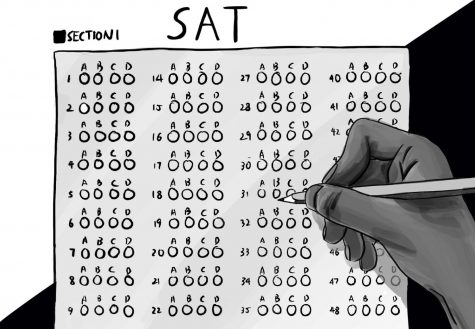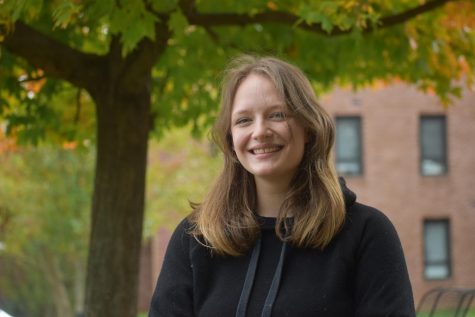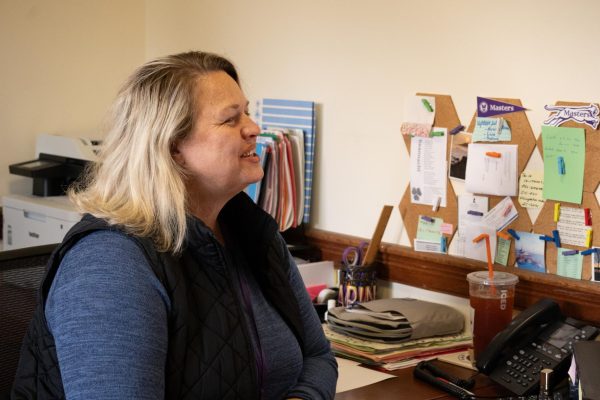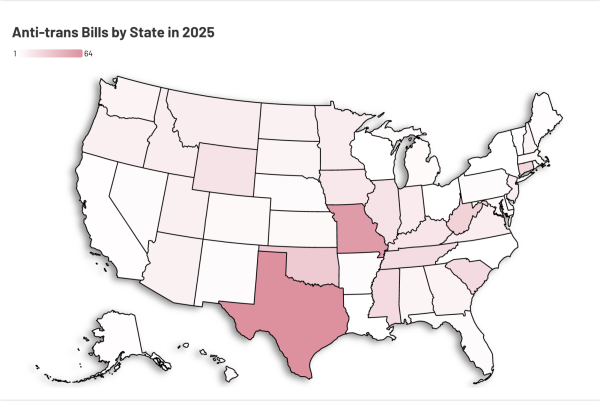Breaking down privilege and the SAT
It is no secret that wealthier students have an advantage on the SAT and ACT.
In 2019, this problem was nationally highlighted when 34 wealthy parents were accused of interfering with the college admissions process to aid their children’s acceptance through means of bribery and cheating on standardized tests. Although paying off colleges, test proctors and coaches is an extreme case, there are many more common systemic barriers in place that harm lower-income individuals taking standardized tests. The statistics are remarkable. The College Board, which creates the SAT, collected data showing that students from families with an annual income of more than $200,000 scored an average of 388 points higher on the SAT than those from families making less than $20,000 annually.
One obvious advantage is that wealthier families can afford to send their children to better schools. But access to test prep, the means to be evaluated for extra time, and the ability retake the test multiple times all factor into test scores – and they all cost money.
Test Preparation:
Affluent students have access to extensive test preparation, both in and out of schools. For years, College Board maintained that the SAT, being a test of general knowledge, could not be studied for. They insisted that coaching to the test, which makes up a quarter of the $1 billion tutoring and test prep industry, according to IBISWorld, would result in minimal, if any, changes in score.
Many companies have emerged that offer one-on-one, personalized tutoring for the exams. Anthony-James Green, a private SAT tutor, wrote an article for Vox, admitting that he made $1,000 an hour coaching the children of wealthy parents. Princeton Review, a private and popular test-prep company, claims that a student can get a 1,500+ on the SAT for a price of $2,000. For $150 an hour, Princeton Review advertises a minimum 250 point gain.
Sophomore Sasha Sinel has been receiving private tutoring since August and has seen an over 200 point improvement in her PSAT scores. She meets with her tutor for an hour each week, with each session costing $90, and plans on continuing the tutoring through junior year.
Private Prep, a tutoring and test prep company, has over a dozen locations nationwide, including one in White Plains. Unlike on-line courses from companies like Khan Academy, they offer one-on-one, personalized test preparation. The tutoring is tailored to the student, so it is difficult to put a price on the service because it varies from client to client. The cost varies depending on if students are willing to receive tutoring online.
Private Prep has a scholarship program with both academic and financial criteria; for instance, students with a “3.5 GPA in a rigorous course load” or a “90%+ scholarship at an independent school” are encouraged to apply. According to Stefanie Lob, who has been both a tutor and administrator at Private Prep for over ten years, “the criteria is designed for students on a path for a competitive four year college.” She has seen clients attend universities across the country with a full-ride, which is the main goal for the program. The scholarship is valued at over $10,000.
On average, according to Lob, Private Prep clients gain 50 percent of the points available to them. For instance, if a student has a 30 on the ACT, they have six points available, and they might go up to a 33.
Lob notes, however, that “the way we look at progress is different than just by points… This helps normalize the playing field for students starting in different places.”
It is in students’ best interest to invest in all parts of their application, despite test scores being an often necessary part.
“I think it is one metric that schools use to evaluate students, but it’s not the most important metric. But, [universities] do need a way to compare students coming from different schools and different parts of the country.”

Testing Accommodations:
Many students receive 504 accommodations in school, giving them extra time to complete tests due to learning difficulties. Students with disabilities sometimes struggle to complete standardized tests in time; studies have shown that extra time improves test scores for students, disability or otherwise.
Students must get evaluated by a specialist to qualify, which can cost as much as $10,000 not covered by insurance, and take many hours over the course of multiple days. In wealthier communities, according to an article in The New York Times, students have higher rates of accommodations. William Singer, a consultant hired by many of the families involved in Operation Varsity Blues, directed his clients to a psychologist, telling the student to “act stupid” during the examination in order to qualify for extra time.
On average, 5.8 percent of students in the top 1 percent of income have a 504 accommodation, with some districts having rates as high as 18 percent. Only 1.5 percent of students in the bottom 1 percent have access to a 504. In addition, white students have accommodations at a greater rate than any other race.
Sander Peters, a sophomore at Masters, is approved for extra time, but must get re-evaluated soon, as 504 status must be updated every four years. It will take eight hours over two days and cost between $5,000 and $6,000.
Leveling the Playing Field
In recent years testing companies and colleges have begun actively searching for ways to make testing more equitable – but the solutions bring their own controversies.
In May 2019, College Board, the organization that facilitates the SAT, released the “adversity score” in an attempt to bridge the gap between students of different socioeconomic statuses. The score collected an average rating of fifteen different factors, like neighborhood school quality, crime rates and poverty, to give a student a score from 1-100. A higher score meant that, in theory, a student had more privilege than those with a lower score. This would then be given to colleges, along with their SAT score, to provide admissions officers with context for applicant scores.
Critics of the adversity score argued that it simplified systemic struggles to a numerical value, and that the need for such a score showed the SAT itself to be inherently flawed.
Adam Gimple, director of college counseling at Masters, said “College Board rightfully acknowledged that the preparation and basic education that students get prior to sitting for standardized tests differ greatly based on the resources allocated to where you are. They came right out and said what we have all known for years.”
However, Gimple noted that while its origins were valid, “The execution, and roll out, and actual construction of how that score was actually determined, was incredibly flawed.”
He added that it was easy for families to appear less privileged by taking advantage of the way adversity was measured.
“One of the first things people jumped on was the zip code where you sat for your assessment was tied to an impact on the adversity score. But what was to prevent someone from a very affluent area to register simply to take a test in an under-resourced area and have their adversity score impacted?”
The adversity score has since been replaced with the Landscape, which doesn’t measure adversity, but rather provides colleges with “consistent high school and neighborhood information for all applicants to help admissions officers fully consider every student, no matter where they live,” according to the College Board website. Still in development, Landscape hopes to acknowledge the correlation between applicants’ upbringing and test scores.
Test-Optional Colleges:
Recognizing that standardized tests are not equitable has led many schools to become test-optional, meaning students don’t have to submit their SAT or ACT scores. In 2018, the University of Chicago went test-optional, and the entire University of California system is considering it. A 2018 study hosted by the National Association for College Admission Counseling found that minority students were more likely to not submit test scores than white students. Additionally, 27 of the 28 schools in the study found an increase in the number of first-generation college students, minority and low-income students.
However, universities may have reasons beyond increasing student diversity for going test optional. Because high-scoring students are more likely to submit their test scores than low-scoring students, the average SAT score for the college is inflated. Additionally, more students will be likely to apply to test-optional schools, which lowers the school’s acceptance rate and, in theory, increases their ranking in polls such as the annual US News and World Report college rankings.
History of the SAT:
Standardized tests in the United States have a history of racism and bias, from literacy tests that disenfranchised racial minorities in the 19th and early 20th centuries, to the very SAT over 2 million students took in 2019. The SAT was a military test first adapted for college admissions in 1926 by Dr. Carl Brigham, who was a sitting member on the advisory council of the American Eugenics Society. He believed that standardized tests could maintain racial purity, as described in his book “A Study of American Intelligence.”
As told in an article by Sidney Purell, a former writer for The Atlantic, “The tests, he wrote, would prove the racial superiority of white Americans and prevent ‘the continued propagation of defective strains in the present population’—chiefly, the ‘infiltration of white blood into the negro.’” Brigham insisted that American intelligence was worsening due to racial diversity, again writing, “The decline of American intelligence will be more rapid than the decline of the intelligence of European national groups, owing to the presence here of the negro.”
Jay Rosner, a national admissions-test expert, and author of “How the SAT Creates Built-In Headwinds”, described a process that perpetuated the racial disadvantage on individual questions. In 1998, for instance, SAT designers would remove a verbal sentence-completion questions which black students performed better on than white students as a way of replicating the results on past tests. Essentially, tests that were seen as good and fair when they had similar results as those taken in the past. In test-writers’ defense, they might claim that race wasn’t the only factor, if a factor at all, used to determine if a question should be included in the final exam, but the impact does lead to racially biased results.
The standardized test originally sought out to measure knowledge, instead of aiming to show mastery of skills; it was considered an impartial measure of intrinsic intelligence. However, it seems that assumption excludes large demographics and backgrounds.
As written in an article by Wayne Au, a professor at the University of Washington, “the assumptive objectivity of standardized testing was thus used to ‘scientifically’ declare the poor, immigrants, women, and non-whites in the U.S. as mentally inferior, and to justify educational systems that mainly reproduced extant socio-economic inequalities.”
There are undeniable advantages to the SAT, both conscious and unconscious, rooted in US history, and perpetuated in the current educational system, that influence an applicant’s college admissions process.

Sophia Van Beek is a senior at The Masters School and currently serves as the Editor-in-Chief of Tower. She has been a part of Tower for four years, serving...






